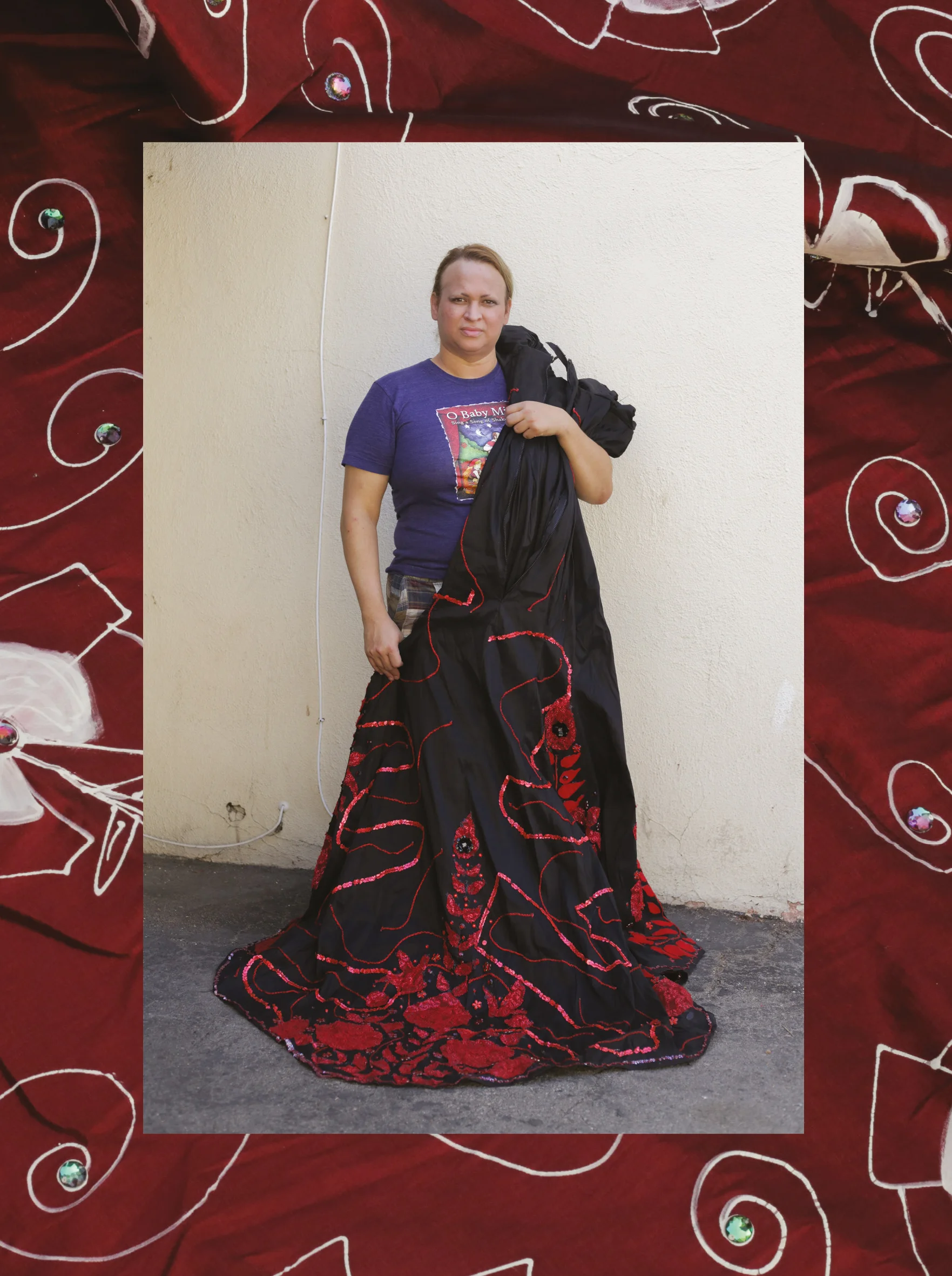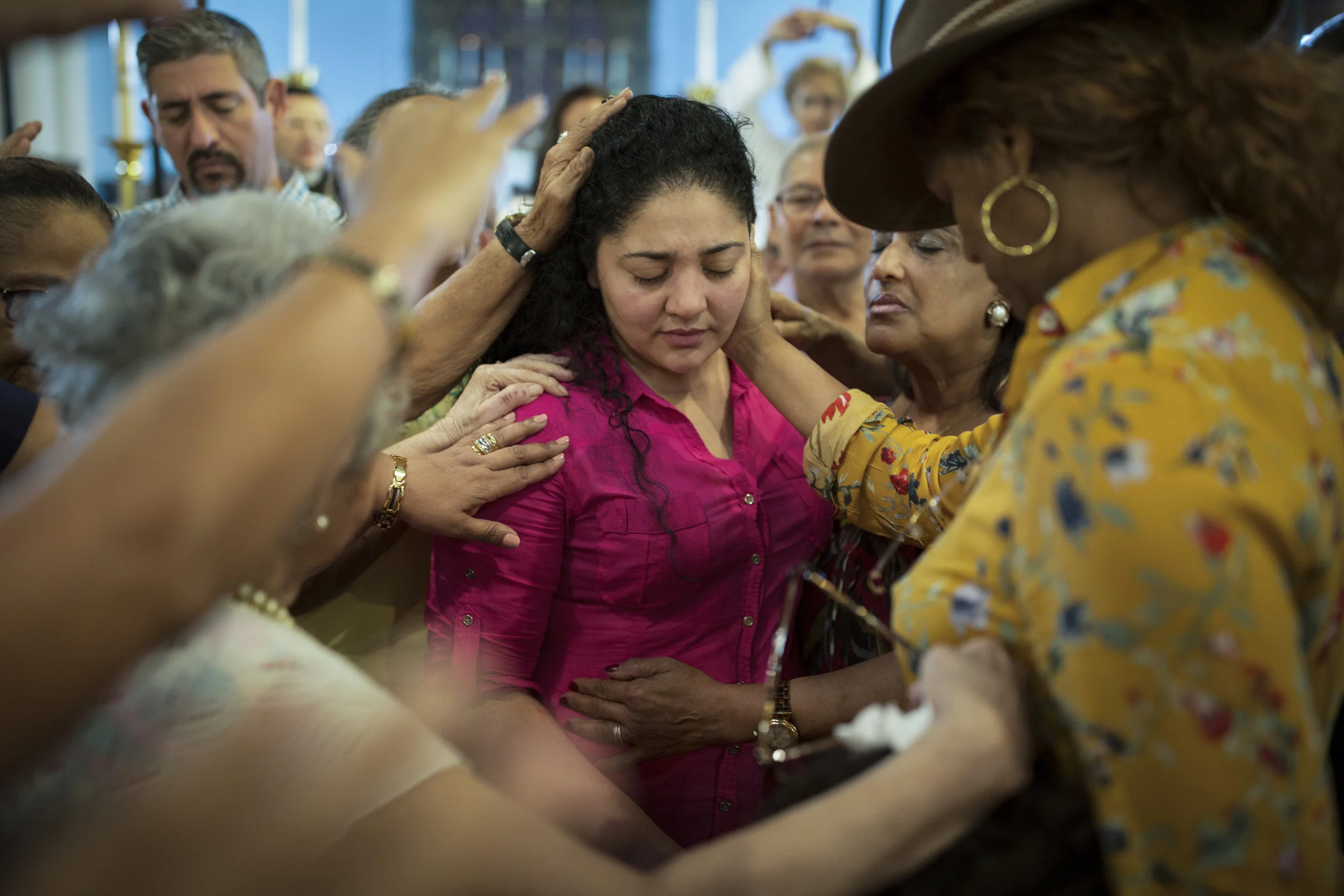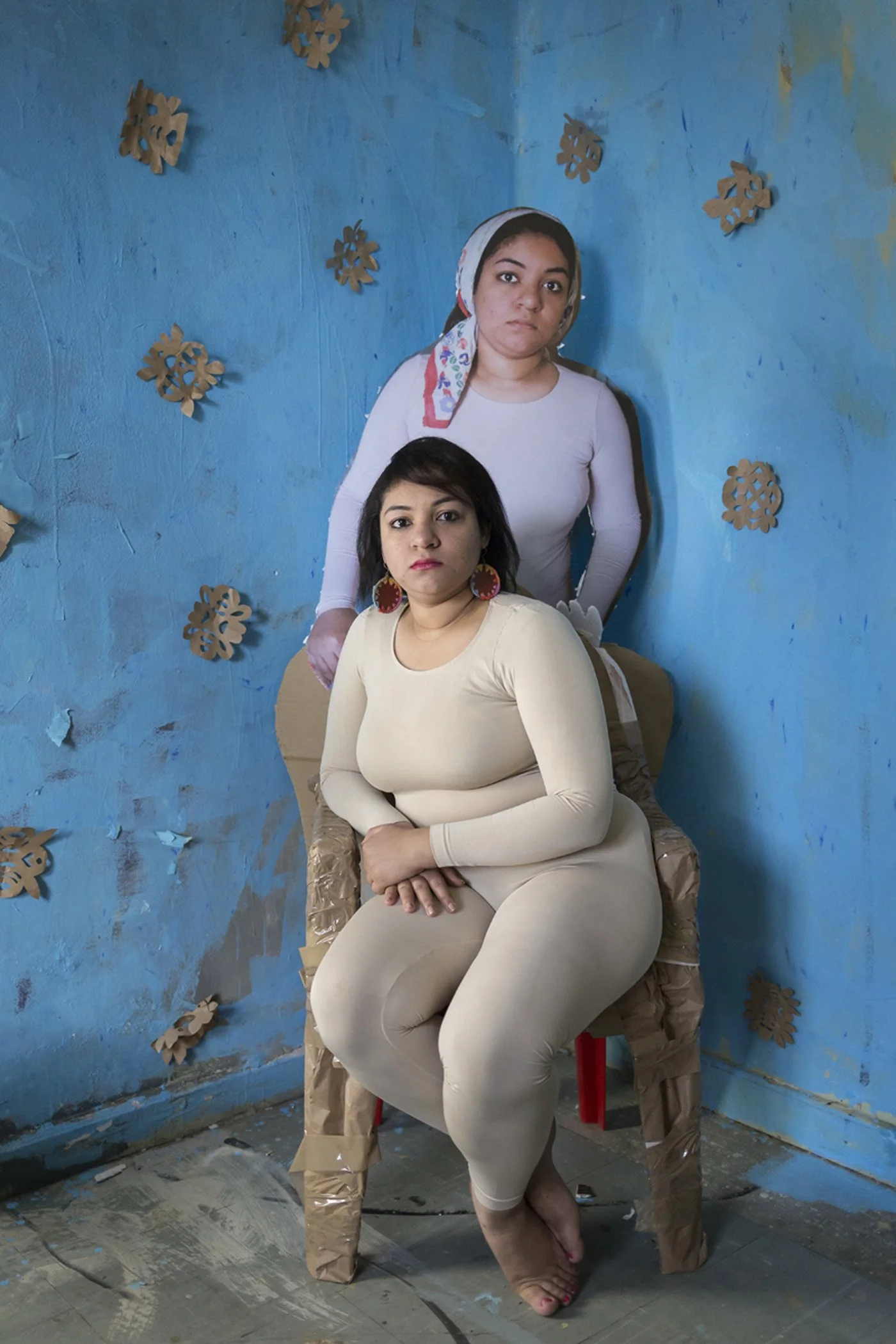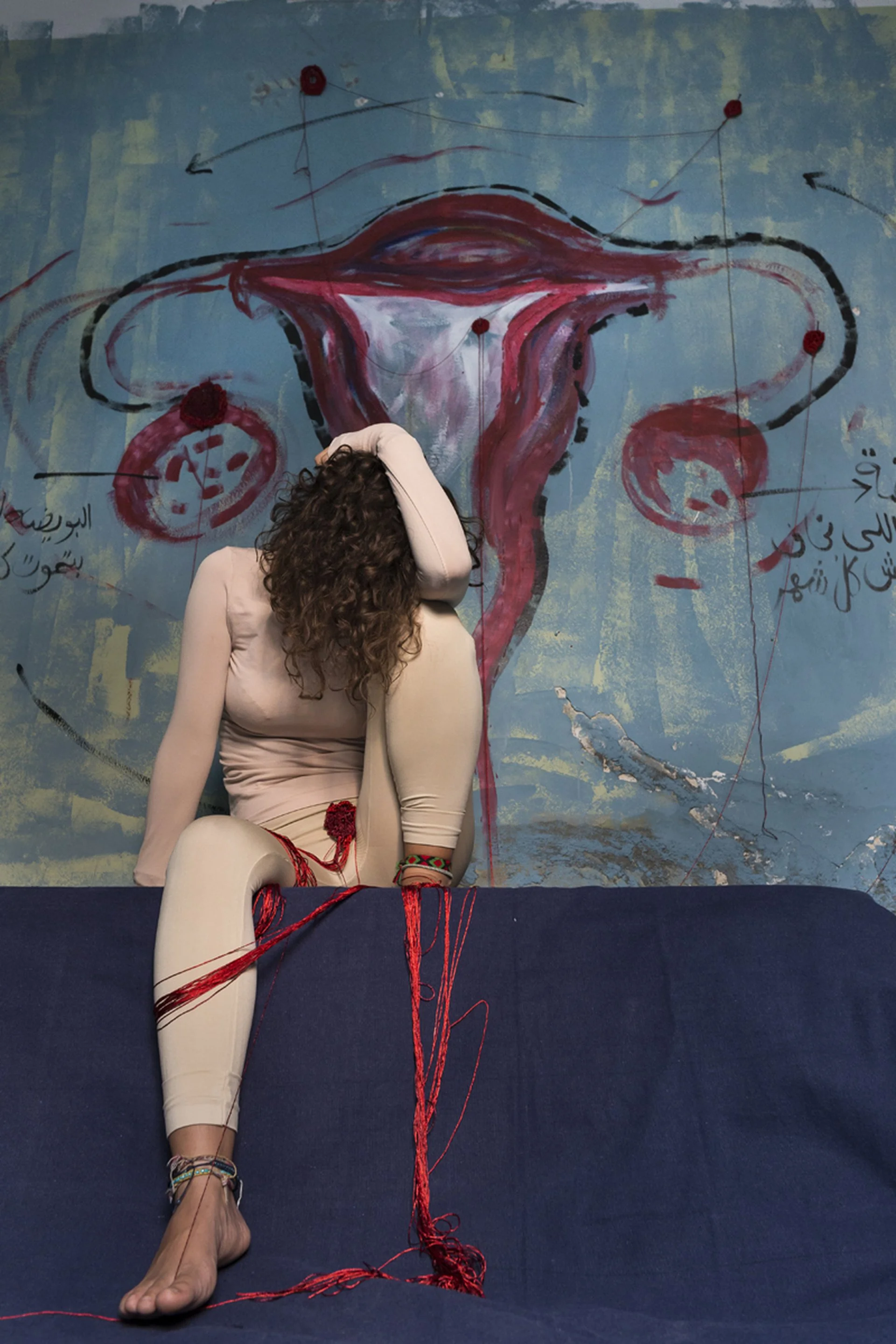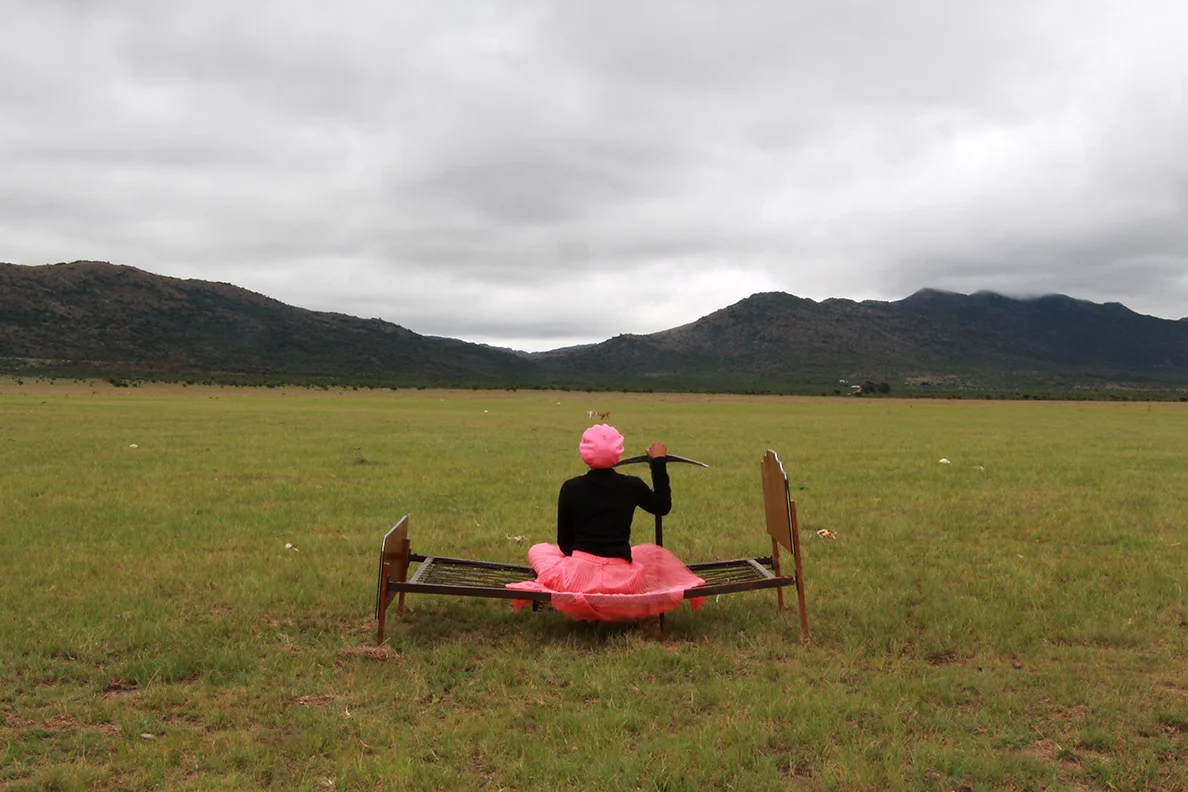Women- and LGBTQI-centered Stories supported by the Magnum Foundation
Education is Forbidden
Rahima Gambo | Nigeria
Education is Forbidden is a multimedia narrative about the experiences of students attending schools and universities in the midst of the Boko Haram insurgency in north east Nigeria.
“Healing from past trauma doesn’t fit into a timeframe. It overflows into the present, as each retelling resurrects the story in a new form. By combining photography and school book illustrations, I aim to convey the complex, open-ended, and fragmented nature of these students’ experiences.”
Caricias (Caresses)
Arlene Mejorado | Los Angeles
In Los Angeles, migrant communities often hire LGBTQI entertainers in the likeness of famous Latinx artists for backyard parties, weddings, and festivals.
“My project is focusing on these LGBTQI and femme Latinx tribute performers, exploring how they use their artistry as catharsis and the subtle shifts in behavior at parties where their presence queers the heteronormative spaces. I aim to show the nuance of what is often seen as spectacle, centering on the individuals and how they create radical spaces of advocacy and support.”
Stitching Together: Garment Workers in Solidarity
Taslima Akhter | Bangladesh
“It’s true that they’re living in very bad conditions, but I want to show their strength also. Because its is from their strength that we get hope. I don’t want to show them all the time as victims, I want to show them as fighters.”
One Day We’ll Understand
Sim Chi Yin | Singapore
Sim Chi Yin was an inaugural fellow in 2010. She went on to be a stringer for The New York Times and contributor to The New Yorker, TIME Magazine, Le Monde, Newsweek, Vogue, and Stern. Most recently, Chi Yin was named the 2017 Nobel Peace Prize photographer, commissioned to reflect on the human experience with nuclear weapons; received the Chris Hondros Fund award; and was made a Magnum Photos nominee. Chi Yin’s career is one that we are proud to have supported for nearly a decade, and it is through her journey that we see the sustained, long-term impacts of our work in the field come to fruition. Chi Yin continues to play an active role in the Magnum Foundation as a mentor in the Photography and Social Justice Program.
Living in Sanctuary
Cinthya-Santos Briones | US
Instead of checking into the immigration office with a one-way ticket to Guatemala, Amanda Morales Guerra defied immigration authorities and took sanctuary at a church in New York City. After living in the United States for over a decade, she refused to be separated from her three U.S.-born children.
Cinthya Santos Briones is working on a long-term project about undocumented families living in sanctuary in New York City churches. Positioning those who take sanctuary as resistance leaders, her work centers the emotional, psychological, and political impact of taking sanctuary, while showing the poignant, quiet, and tender moments of establishing home, routine, and community–imagery rarely depicted in the mainstream representation of asylum seekers.
“In the absence of any significant governmental protection, migrants are the ones pursuing and leading humanitarian strategies of resistance. In solidarity with the undocumented community, this project is a platform to elevate their voices.”
Full Moon On A Dark Night
Soumya Sankar-Bose | India
“My friends’ stories inspired me to work on narratives about their experiences being LGBTQ in India, and about their rights, dreams, and desires. In a society that prevents them from living a “normal” life, this work imagines a world in which freedom to live according to one’s own desires exists for all.”
Sisi Barra (Smoke Work)
Joana Choumali | Côte d'Ivoire
Charcoal is made with wood waste left behind by big corporations exporting wood and exploiting the country’s natural resources. This project intend to shine a light on the grueling everyday life–in a hostile and polluted environment–of the invisible women who re-use the wood chips left behind to create charcoal in order to support their families.
“Amidst the smoke clouds, I could see women, of all ages, doing a backbreaking job–children, girls, teenagers.”
Here We Are
Mengwen Cao | China
“In the mainstream media, marginalized communities like queer and tans people of color (QTPOC) are often seen at the peak or lowest moments of our lives. As part of this community, I am seeking spaces where the nuanced narrative of these lived experience can manifest itself in vibrant colors and dreamy textures. ”
Women on the Outside
Lisa Riordan Seville and Zara Katz | US
Investigative reporter Lisa Riordan Seville and photo editor Zara Katz brought together photographs, text, video, and data to paint a picture of the female family members who must pick up the pieces when a loved one is incarcerated. As a part of their process, they held gatherings and workshops with women who travel great distances across Pennsylvania to maintain ties with their brothers, fathers, boyfriends, and husbands. When we exhibited Women on the Outside, the women featured in the project made the trip out to Brooklyn to experience their stories through the lens of the public. “It feels so good to see everyone reading our stories,” they exclaimed.
“Professionals no longer have a monopoly on storytelling. That forces us to examine our role, query our responsibility, and ask better questions. It requires we confront the fact that those being photographed are not silent actors, and that they may point out that the version of the story we tell is wrong.”
Just Like Us
Eric Gyamfi | Ghana
“I’m super grateful to Magnum Foundation for helping me kickstart a project like this, which I only had as files stashed under my pillows! And for helping me to start important conversations that need to be had. My project has definitely challenged the way people perceive queer people in Ghana”
Orinoco Women’s Journal
Juanita Escobar | Colombia
Along the 300 kilometer stretch of the Orinoco River, Juanita Escobar has been chronicling life on the border between Venezuela and her home country of Colombia. Women have always suffered the impacts of forced migration most severely. In this region, indigenous girls as young as 10 have been ensnared in prostitution and drug use, a situation made worse by the flood of refugees from Venezuela, where desperation has led some women to engage in sex work to feed their families. Despite the chaos, disenfranchisement, and marginalization, Juanita is exploring other themes that show alternative, and hopeful perspectives that lend nuance, individuality, and autonomy to the women at the center of her project, and this border area.
“This story is about women. It is about their bodies, their dreams, their voices, and their desires to resist abandonment and erasure.”
Homemade
Heba Khalifa | Egypt
“‘Be careful, you are a girl.’ Since I was young, I’ve been constantly reminded that being a girl is a liability. Trapped in this body I resented–I wished to lose it, to live without it. I made this series with a women I met on Facebook who have similar stories. For me, storytelling is a way to heal, to free ourselves from the weight of experience.”
I want to make different choices than my mother, but her voice still resonates in my ears saying, “see, I told you, you wouldn’t be able to do it.”
I wait for my period. Getting it means I will not have to go through another abortion in this country–it scares me to death.
Travel Guide for Mama
Sumeja Tulic | Bosnia
Travel Guide for Mama is a conceptual travel guide with advice, safety tips, and insights gleaned from interviews with dozens of women describing their daily experiences and encounters with discrimination while wearing hijab in New York.
“This travel guide is intended for my mom, who started wearing hijab some 25 years ago. Whenever I am away from home, somewhere West where the skyline isn’t dotted with tall mosque towers, I think of my mom and how she would feel where I am.”
Utata Undiphotha Inwele (My Father Plaits My Hair)
Thandiwe Msebenzi | South Africa
“I grew up in a neighborhood in South Africa surrounded by violence, most of which came at the hands of men. In the midst of it all, there were also pockets of kindness and softness that came from some of the men in my life. I’m using photography and performance to interrogate violent masculinity and showcase men who don’t conform to that stereotype.”
The Feminist Memory Project: The Public Life of Women
Nepal Picture Library | Nepal
The Feminist Memory Project seeks to create a visual archive of women’s movements in Nepal. Through gathered archival photographs, other ephemera, and oral histories from around Nepal that capture women in pivotal moments of Nepali history, it consolidates contributions made by pioneering figures who remain marginalized in our male dominated historiographies. The act of inscribing Nepali women en masse into public memory rides on the feminist impulse to memorialize women’s pasts in order to advance liberation.
“To become public is to be seen and accounted for in history. The journey of Nepali women from within the boundaries of domesticity to the openness of public life is a move from obscurity to memory. ”
Am I What You’re Looking For?
Endia Beal | US
“I realized that as a woman of color, I was being judged, quickly, before I even said anything, before I showed my skills or my resumé. No one really knows about the struggles about being a woman of color, and really knowing that you have to mute yourself in order to fit into these spaces. So each woman brought their own experiences, their testimonies.”






